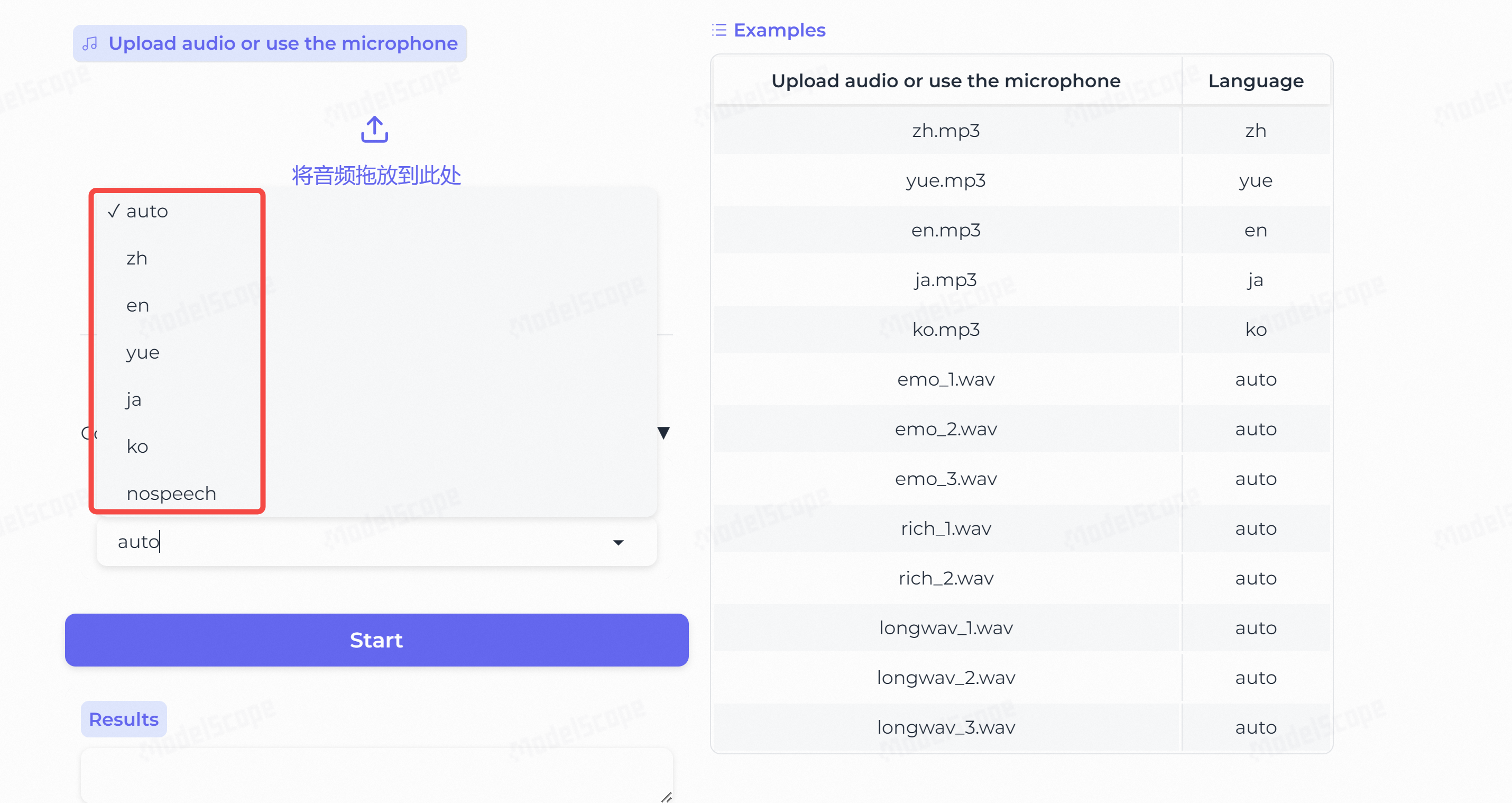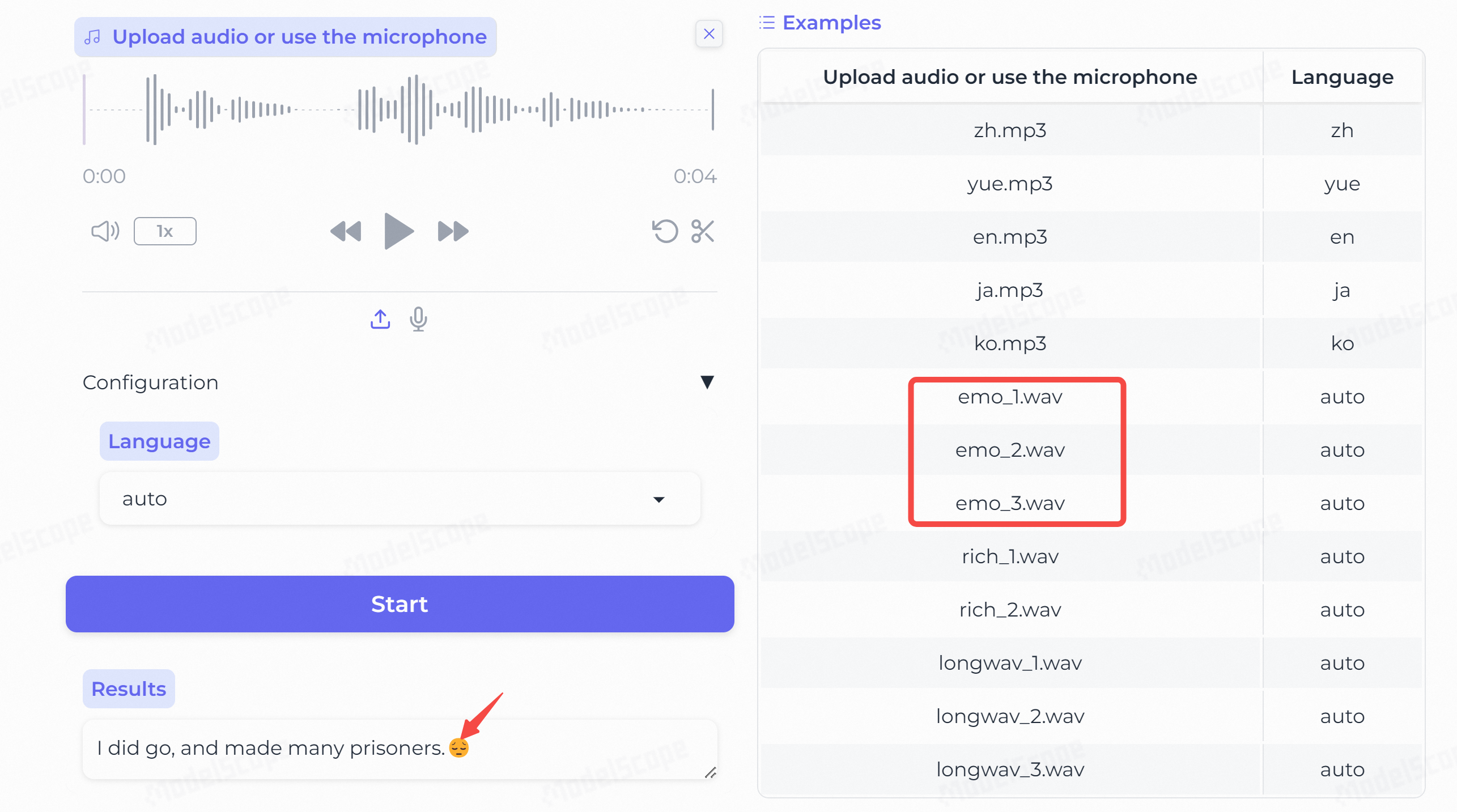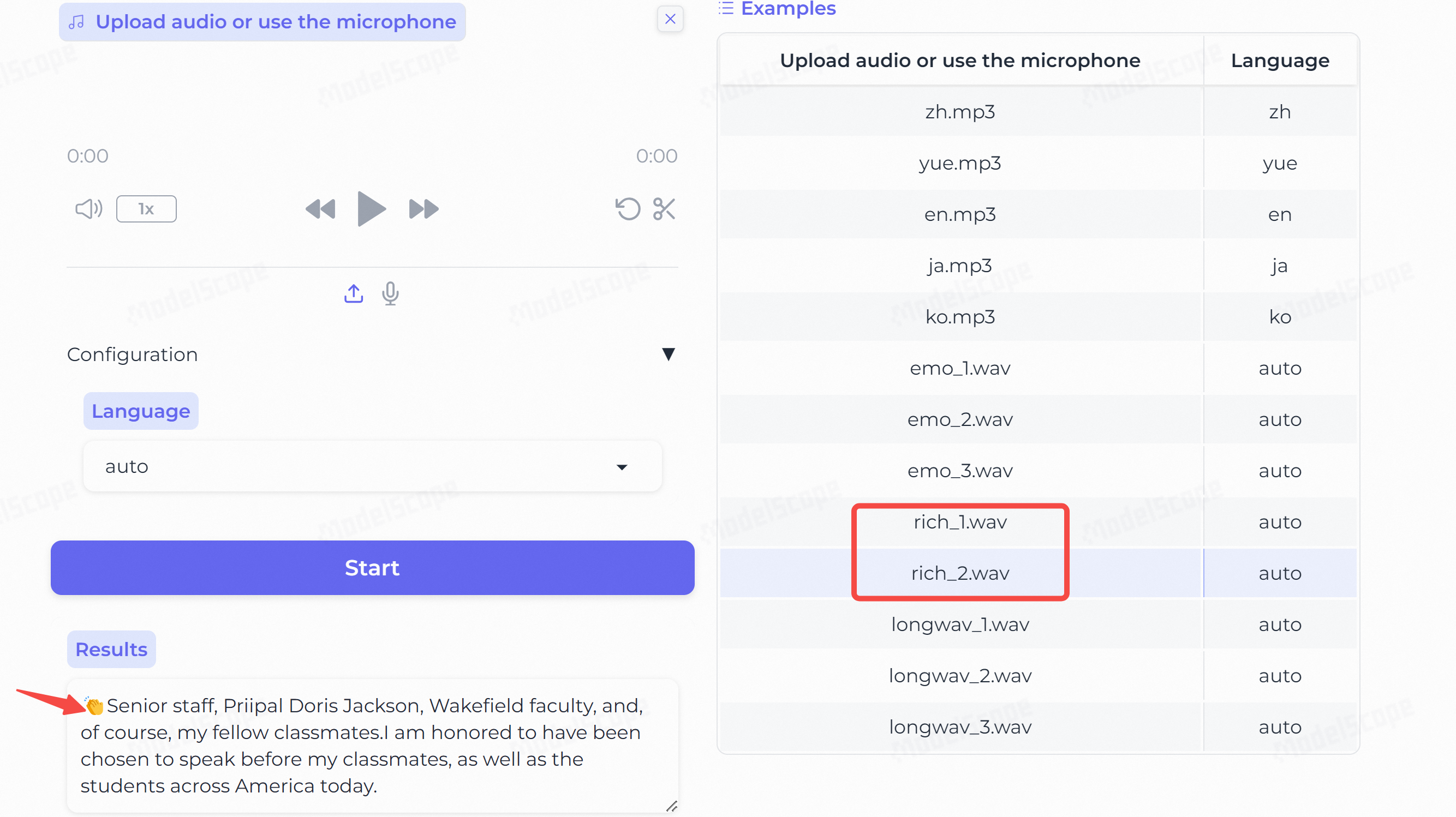前段时间,带着大家捏了一个对话机器人:
手把手带你搭建一个语音对话机器人,5分钟定制个人AI小助手(新手入门篇)
其中语音识别(ASR)方案,采用的是阿里开源的 FunASR,这刚不久,阿里又开源了一个更强的音频基础模型,该模型具有如下能力:
- 语音识别(ASR)
- 语种识别(LID)
- 语音情感识别(SER)
- 声学事件分类(AEC)
- 声学事件检测(AED)
传送门:https://github.com/FunAudioLLM/SenseVoice
今天就带着大家体验一番~
0. 项目简介
模型结构如下图所示:

模型亮点:
-
多语言语音识别:
经过超过40万小时的数据训练,支持50多种语言,其识别性能超越了Whisper模型。 -
丰富的转录能力:
具备出色的情感识别能力,在测试数据上超越了当前最佳模型。
提供声音事件检测能力,支持检测各种常见的人机交互事件,如背景音乐、掌声、笑声、哭泣、咳嗽和打喷嚏。 -
高效推理:
SenseVoice-Small模型采用非自回归的端到端框架,具有极低的推理延迟。处理10秒音频仅需70毫秒,比Whisper-Large快15倍。 -
便捷的微调:
提供便捷的微调脚本和策略,使用户能够根据业务场景轻松解决长尾样本问题。
1. 在线体验
在线体验地址:https://www.modelscope.cn/studios/iic/SenseVoice
语音识别:支持中、粤、英、日、韩语等 50 多种语言。

情感识别:比如积极 or 消极,以 Emoji 表情输出。

音频事件检测:同样以 Emoji 表情输出。

2. 本地部署
2.1 安装 & 测试
首先 git 下载到本地,然后安装必要的包:
git clone https://github.com/FunAudioLLM/SenseVoice.git
pip install -r requirements.txt
注意:
- 本项目依赖的
funasr版本要>=1.1.2,这个和funasr语音识别模型的版本是不匹配的,如果要同时使用这两个模型,会出现版本冲突,所以最好采用 conda 管理 python 环境。 - 本项目依赖的
torchaudio需要更新到最新版本,否则会出现报错。
接下来,我们采用官方脚本进行测试:
from funasr import AutoModel
from funasr.utils.postprocess_utils import rich_transcription_postprocessmodel_dir = "iic/SenseVoiceSmall"
model = AutoModel(model=model_dir,trust_remote_code=True,remote_code="./model.py",vad_model="fsmn-vad",vad_kwargs={"max_single_segment_time": 30000},device="cuda:0",
)res = model.generate(input=f"{model.model_path}/example/en.mp3",cache={},language="auto", # "zn", "en", "yue", "ja", "ko", "nospeech"use_itn=True,batch_size_s=60,merge_vad=True, #merge_length_s=15,
)
text = rich_transcription_postprocess(res[0]["text"])
print(text)
首次使用,会下载模型,默认保存在你的根目录下:~/.cache/modelscope/。
2.2 FastAPI 部署
测试成功后,我们采用 FastAPI 把模型部署成一个服务,方便提供给其他应用调用。
2.2.1 服务端
首先准备好服务端代码 speech_server.py:
import torch
import base64
import uvicorn
from fastapi import FastAPI
from funasr import AutoModel
from funasr.utils.postprocess_utils import rich_transcription_postprocess
from pydantic import BaseModel# asr model
model = AutoModel(model="iic/SenseVoiceSmall",trust_remote_code=True,remote_code="./model.py",vad_model="fsmn-vad",vad_kwargs={"max_single_segment_time": 30000},device="cuda:0",
)# 定义asr数据模型,用于接收POST请求中的数据
class ASRItem(BaseModel):wav : str # 输入音频app = FastAPI()
@app.post("/asr")
async def asr(item: ASRItem):try:data = base64.b64decode(item.wav)with open("test.wav", "wb") as f:f.write(data)res = model.generate("test.wav", language="auto", # "zn", "en", "yue", "ja", "ko", "nospeech"use_itn=True,batch_size_s=60,merge_vad=True, #merge_length_s=15,)text = rich_transcription_postprocess(res[0]["text"])result_dict = {"code": 0, "msg": "ok", "res": text}except Exception as e:result_dict = {"code": 1, "msg": str(e)}return result_dictif __name__ == '__main__':uvicorn.run(app, host='0.0.0.0', port=2002)2.2.2 服务启动
CUDA_VISIBLE_DEVICES=0 python speech_server.py > log.txt 2>&1 &
服务成功启动,可以发现显存只占用 1202 M,比上一篇的 FunASR 更轻量~
+-----------------------------------------------------------------------------------------+
| Processes: |
| GPU GI CI PID Type Process name GPU Memory |
| ID ID Usage |
|=========================================================================================|
| 2 N/A N/A 3178377 C python 1202MiB |
+-----------------------------------------------------------------------------------------+
2.2.3 客户端
最后,我们来编写客户端代码:
import base64
import requestsurl = "http://10.18.32.170:2002/"def asr_damo_api(wav_path):headers = {'Content-Type': 'application/json'}with open(wav_path, "rb") as f:wav = base64.b64encode(f.read()).decode()data = {"wav": wav}response = requests.post(url+"asr", headers=headers, json=data)response = response.json()if response['code'] == 0:res = response['res']return reselse:return response['msg']if __name__ == '__main__':res = asr_damo_api("xxx/.cache/modelscope/hub/iic/SenseVoiceSmall/example/en.mp3")print(res)
写在最后
本文通过对 SenseVoice 模型的实操,带领大家快速上手语音识别模型。
希望能激发你的更多创作灵感,打造自己的 AI 助手。
如果你对本项目感兴趣,欢迎点赞收藏并分享给更多朋友!
